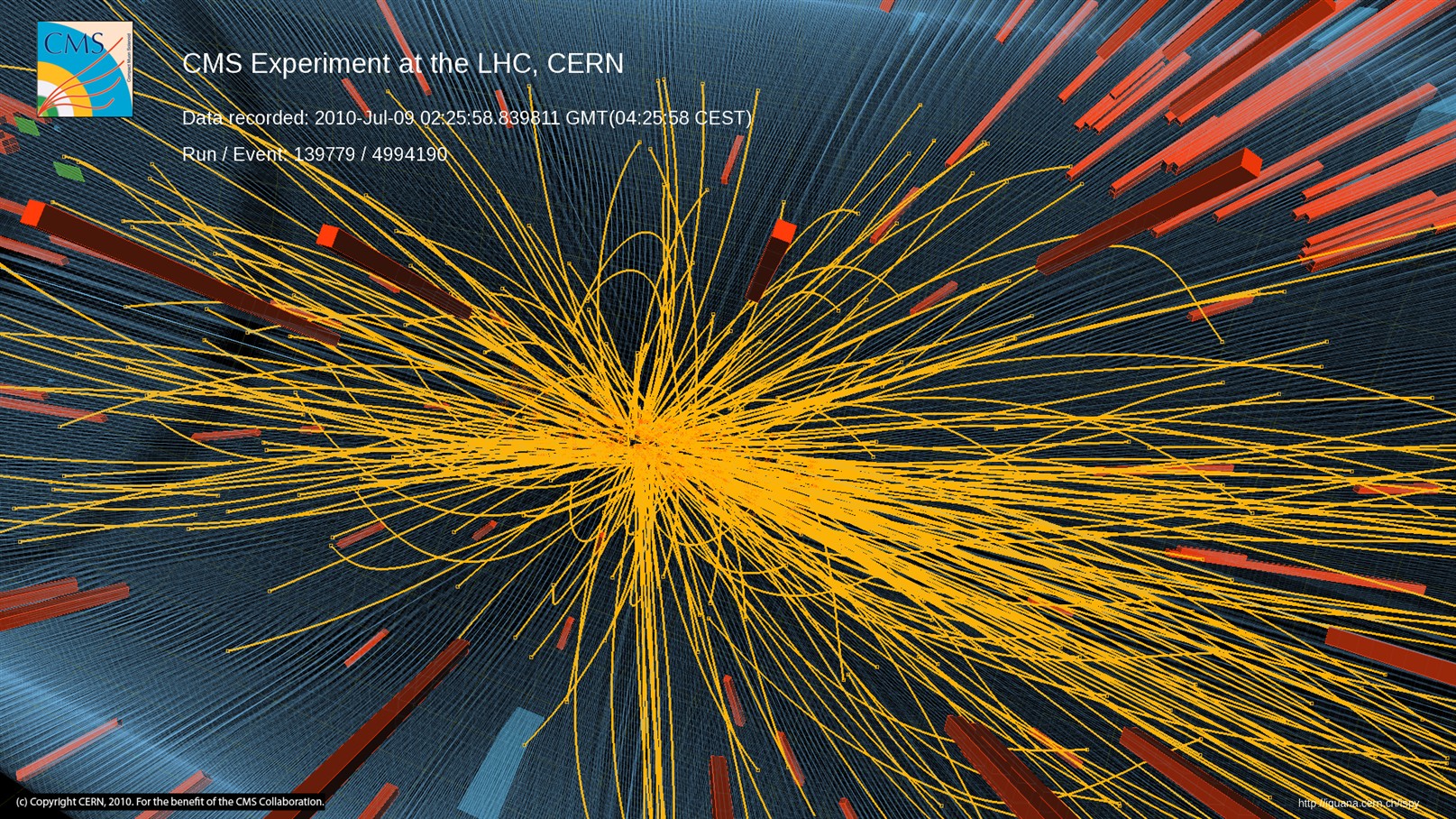Gigantic Swiss Atom Smasher Breaks World Record

The world's largest particle accelerator, the Large Hadron Collider, has set a new world record for colliding two beams of more particles together than ever before.
The Large Hadron Collider (LHC) at the CERN physics lab in Geneva, Switzerland, has been operating since 2009, slowly ramping up its power levels and the intensity of its particle beams. Beam intensity is measured in luminosity, which corresponds to how many particles — in this case protons — are packed into each beam. The more protons that are accelerated along LHC's 17-mile long (27-km) loop, the greater the chances that two protons will smack into each other head on.
These collisions are what the atom smasher was created for. In their energetic aftermath, exotic particles, some of which have never been seen before, can be produced and measured. [Strange Quarks and Muons, Oh My! Nature's Tiniest Particles Dissected]
"Beam intensity is key to the success of the LHC, so this is a very important step," CERN director general Rolf Heuer said in a statement. "Higher intensity means more data, and more data means greater discovery potential."
The LHC set the new beam intensity world record around midnight Geneva time on April 22. It reached a luminosity of 4.67 x 1032 cm-2s-1, greater than the previous world record of 4.024 x 1032cm-2s-1, which was set by the world's second-largest atom smasher, the Fermi National Accelerator Laboratory's Tevatron collider in Batavia, Ill., in 2010.
Scientists want to create as many collisions as possible, because some of the particles they're looking for are extremely rare, and will only pop up once in a while. One example is the fabled Higgs boson particle, thought to imbue other particles with mass. This one has been theorized, but never detected. If it exists, it will be created in the LHC only occasionally.
With the new intensities of the LHC, physicists should know soon whether the Higgs boson exists or not.
Sign up for the Live Science daily newsletter now
Get the world’s most fascinating discoveries delivered straight to your inbox.
"There's a great deal of excitement at CERN today," said CERN's director for research and scientific computing, Sergio Bertolucci, "and a tangible feeling that we're on the threshold of new discovery."
You can follow SPACE.com senior writer Clara Moskowitz on Twitter @ClaraMoskowitz. Follow LiveScience for the latest in science news and discoveries on Twitter @livescience and on Facebook.











